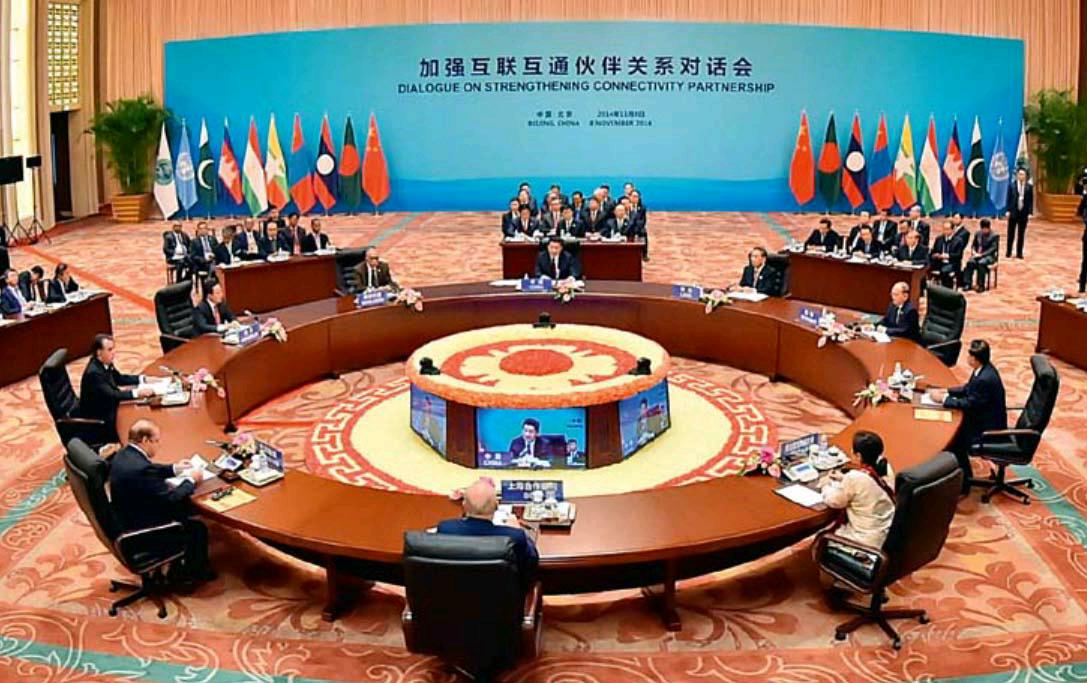Cementing The Silk Road
2016-03-16byZiMo
by+Zi+Mo

On January 19, 2016, Chinese President Xi Jinping embarked on state visits to Saudi Arabia, Egypt, and Iran in the Middle East. As two major ancient human civilizations, China and the Middle East were connected by the Silk Road ages ago. At the junction of trade routes connecting Africa, Asia, and Europe, the Middle East occupies a vital geographic place in the China-proposed initiative to build the Silk Road Economic Belt and the 21st Century Maritime Silk Road (collectively known as the Belt and Road Initiative). Zhao Lei, a professor from the Institute of International Strategies at the Party School of the Central Committee of the Communist Party of China, noted that Xis Middle East visit would facilitate implementation of the Belt and Road Initiative in the region, especially through communication with Saudi Arabia, Egypt, and Iran – three major powers in the Middle East.
Community of Shared Destiny
Dating back more than two millennia, the overland Silk Road originated in Chinas Xian and reached the European Continent via West Asia and the Middle East, becoming an artery for political, economic and cultural exchanges between the East and West. Meanwhile, the Maritime Silk Road linked China with Africa and Europe, becoming the primary sea route for trade and cultural communication between the East and West.
Based on this historical background, in 2013, President Xi proposed the construction of the Silk Road Economic Belt and the 21st Century Maritime Silk Road during visits to Kazakhstan and the Association of Southeast Asian Nations (ASEAN), respectively. The Initiative involves countries and regions that are home to nearly 4.4 billion people, accounting for 63 percent of the global population. The multinational management and consulting firm McKinsey estimates that by 2050, nations and regions along the Belt and the Road will have contributed 80 percent of the worlds incremental GDP growth.
The Belt and the Road integrate Asia, Africa, and Europe, with the emerging East Asia Economic Circle and the more mature Europe Economic Circle at opposite ends and many inland countries of great potential in between. For a long time, those inland countries suffered from underdeveloped infrastructure. “The Belt and Road Initiative will enhance connectivity between Asian, African and European continents as well as their surrounding oceans, enabling East Asia and Europe to optimize allocation of resource factors in a broader and deeper way,” opines Shi Yulong from the Academy of Macroeconomic Research under National Development and Reform Commission of China. “This will promote freer and more orderly flow of market factors, efficient allocation of resources, and deep market integration between the two economic circles.” He adds that inland countries along the way will see benefits throughout the process.
Many foreign media organizations and experts spoke highly of the Initiative. Reuters commented that Chinas Belt and Road Initiative caters to the common needs of countries involved and offers a new cooperative channel for them to complement each other and cooperate in an open manner. Asanga Abeyagoonasekera, executive director of Sri Lanka-based Lakshman Kadirgamar Institute of International Relations and Strategic Studies, remarked that the Belt and Road Initiative will enhance win-win cooperation and interconnectivity of countries involved, enabling them to share the benefits of Chinas economic growth.
From Dream to Reality
Over the two years since its inception, the Belt and Road Initiative has been transforming from a dream into reality. In 2015, in particular, implementation of the Initiative took concrete steps forward. To date, China has signed cooperative agreements on construction of the Belt and Road Initiative with more than 20 countries.
Breakthroughs were first made in Eurasia. Last year, China reached cooperative agreements concerning the Belt and Road Initiative with almost every country in Central Asia and Transcaucasia. Beijing and Moscow signed a joint statement to align construction of the China-proposed Silk Road Economic Belt with Russias Eurasian Economic Union. In the joint statement, both sides pledged to increase cooperation under the framework of the Shanghai Cooperation Organization (SCO) and boost implementation of the Belt and Road Initiative across the Eurasian landmass. In December 2015, the 14th Meeting of the Council of Heads of Government (Prime Ministers) of SCO Member States was held in Zhengzhou, capital of central Chinese Henan Province, at which the Belt and Road Initiative became one of the most-discussed topics. In a joint statement on regional economic cooperation issued at the meeting, all sides reaffirmed willingness to incorporate promotion of connectivity of the Silk Road Economic Belt within their respective development strategies and regional integration mechanisms such as the Eurasian Economic Union.
China and the European Union (EU) agreed to connect the Belt and Road Initiative and the Investment Plan for Europe. To this end, the two sides negotiated the establishment of the ChinaEU joint investment fund as a cooperative platform to promote interconnectivity. Beijing and London have begun discussing connectivity of the Belt and Road Initiative and Britains infrastructure upgrade plan. China and Germany are coordinating mechanisms to integrate “Made in China 2025” and Germanys“Industry 4.0” strategy. Under the 16+1 framework, China and some central and eastern European countries agreed to launch the“three-sea harbor district cooperation” initiative, involving cooperation programs based around the Adriatic, Baltic, and Black seas, and further explore new interconnectivity frameworks while accelerating construction of the China-Europe land-sea express route in cooperation with the arterial Hungary-Serbia Railway.
In Northeast Asia, China and Mongolia chose to connect the Silk Road Economic Belt and the Grassland Route. In Southeast Asia, an agreement to construct the Jakarta-Bandung high-speed railway has been signed between China and Indonesia. Meanwhile, construction for railroads linking China to Laos and Thailand is prepared and the planning of the China-Vietnam railway is underway. A pan-Asia railway network is taking shape. In South Asia, the China-Pakistan Economic Corridor has produced a clear roadmap, with a number of cooperative projects now underway. Construction of the Bangladesh-China-India-Myanmar (BCIM) Economic Corridor has already seized early vital success, and an artery connecting East Asia and South Asia will soon take shape.
A massive volume of investment will be required to achieve infrastructure interconnectivity within the framework of the Belt and Road Initiative. In addition to the US$40 billion Silk Road Fund established by China, the Asian Infrastructure Investment Bank (AIIB), which officially began operation early this year, will also play a significant role. According to AIIB governor Jin Liqun, the bank plans to launch its first investment project in the second quarter of this year and facilitate loans totaling US$10 to 15 billion throughout 2016. “Central Asia, South Asia and Southeast Asia occupy vital locations in the Belt and Road Initiative,” explains Wang Jun, deputy director of the Department of Consultancy and Research of the China Center for International Economic Exchanges, “and countries in those regions have huge demand for infrastructure investment. So, there is a very high chance AIIB will provide its first loan to these regions considering the banks founding principles.”
In a speech at the opening ceremony of the recent seminar on the international situation and Chinese diplomacy, Chinese Foreign Minister Wang Yi pointed out that China would further promote the implementation of the Belt and Road Initiative in 2016, with infrastructure interconnectivity and industrial capacity cooperation as the key focus, to deepen connectivity of development strategies of China and the rest of the world with an eye on mutual benefits and win-win cooperation.